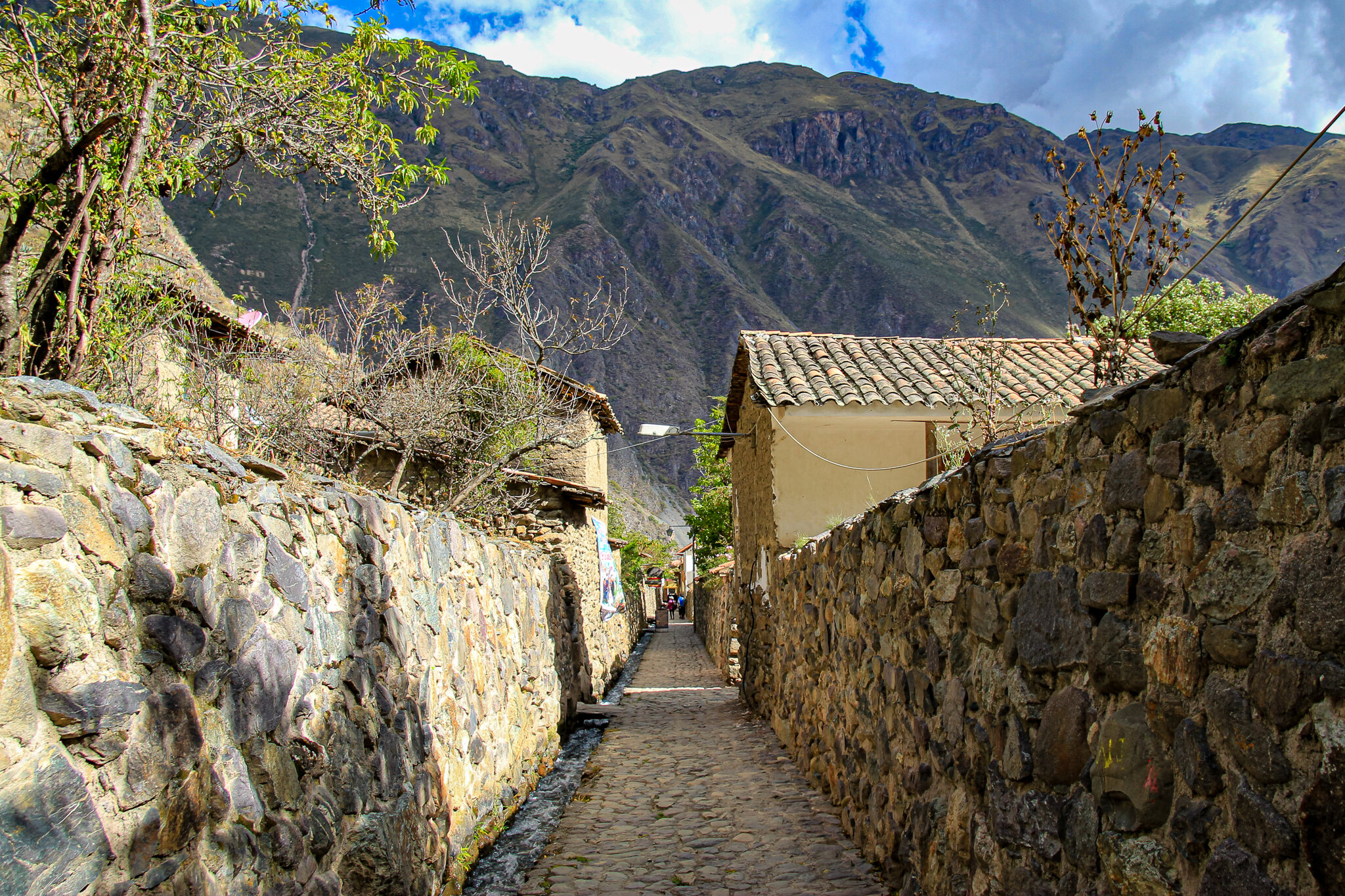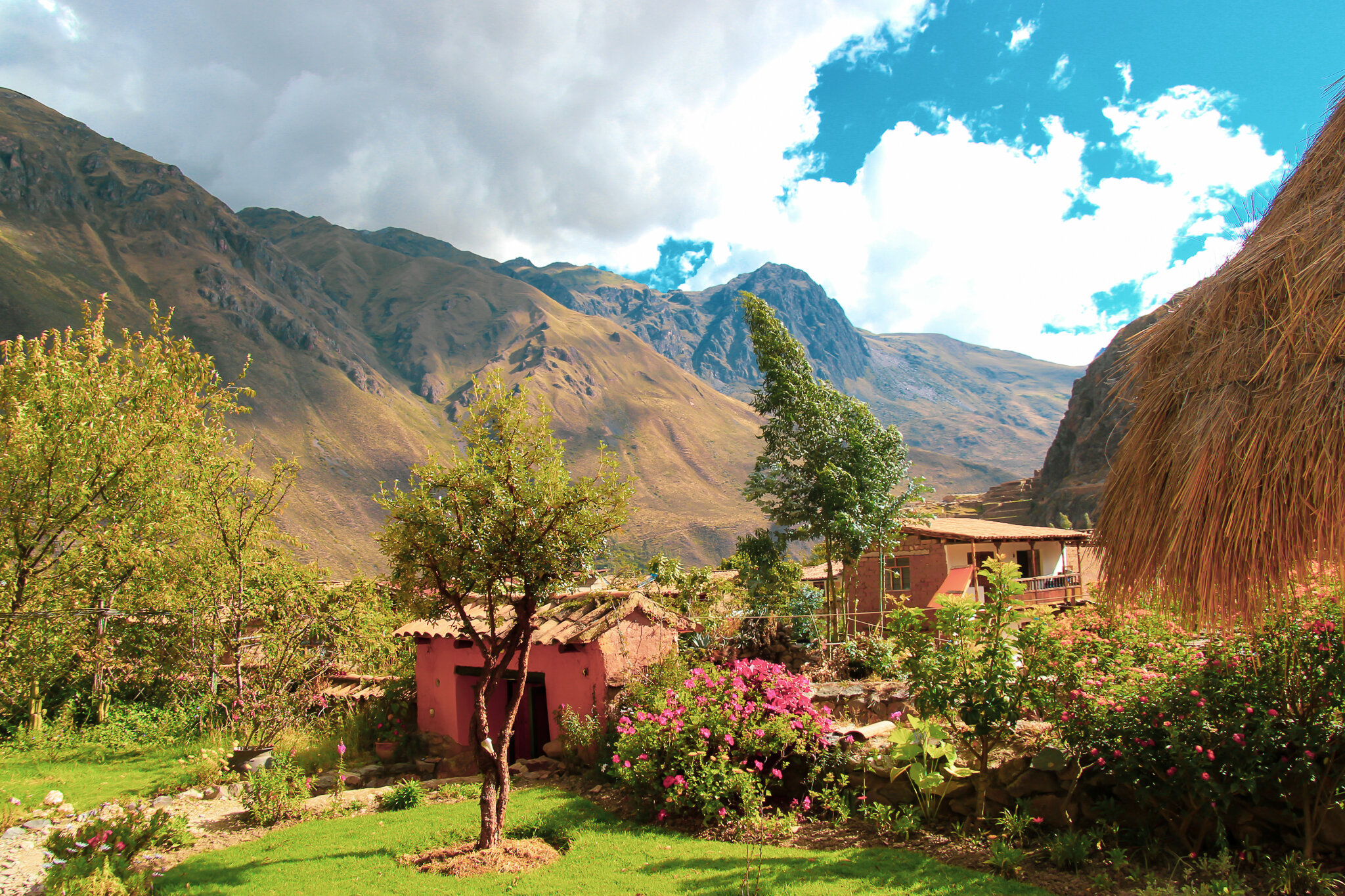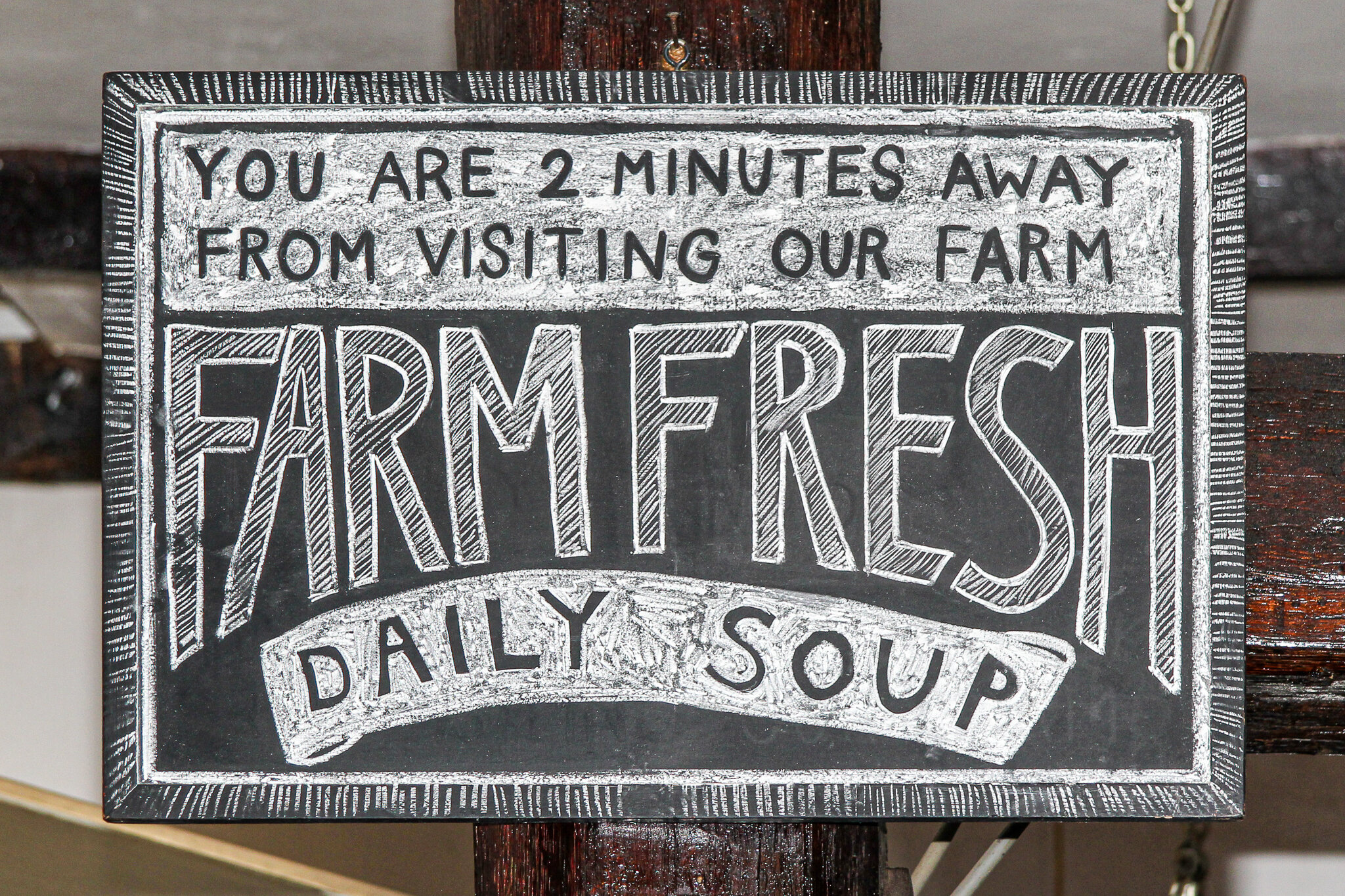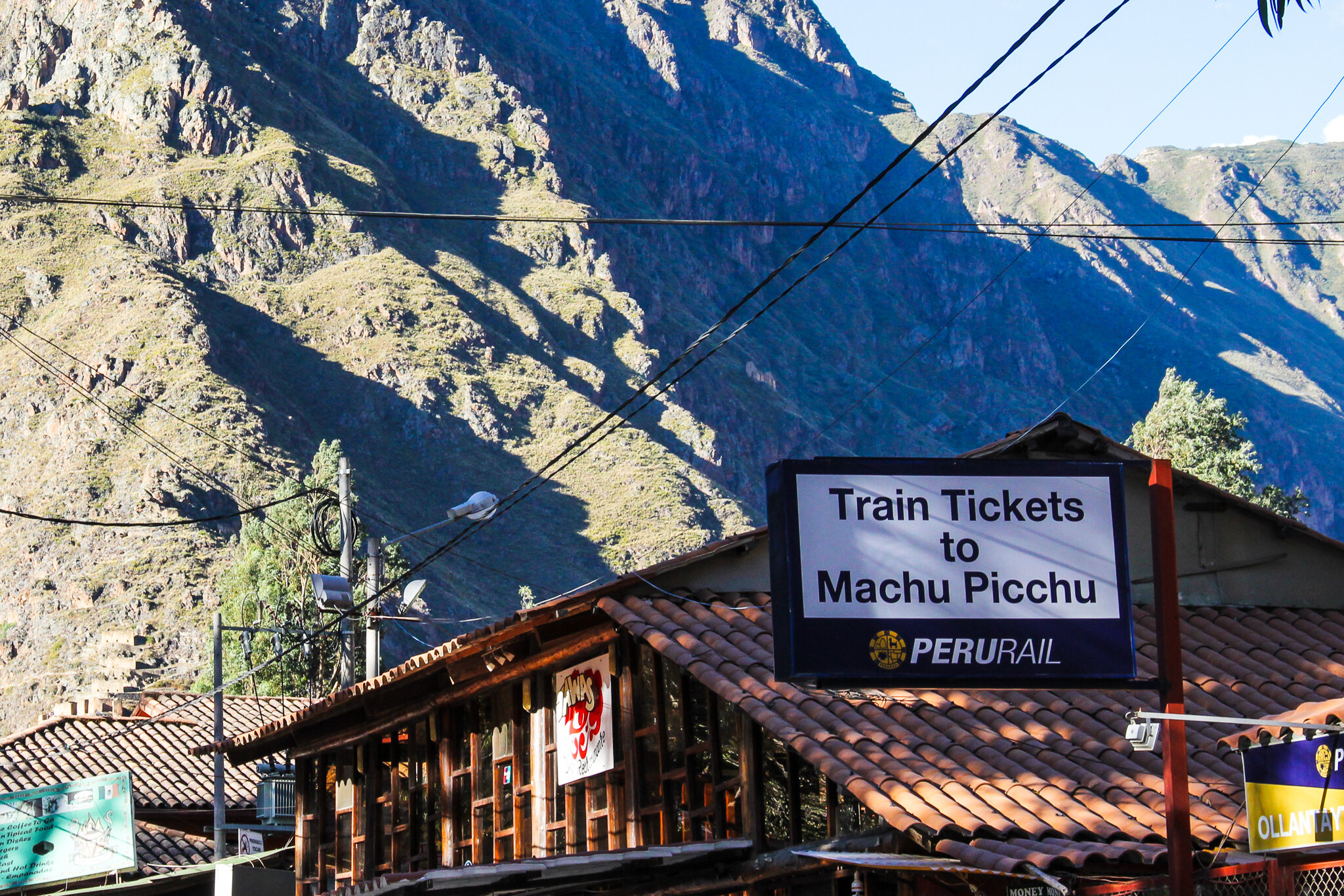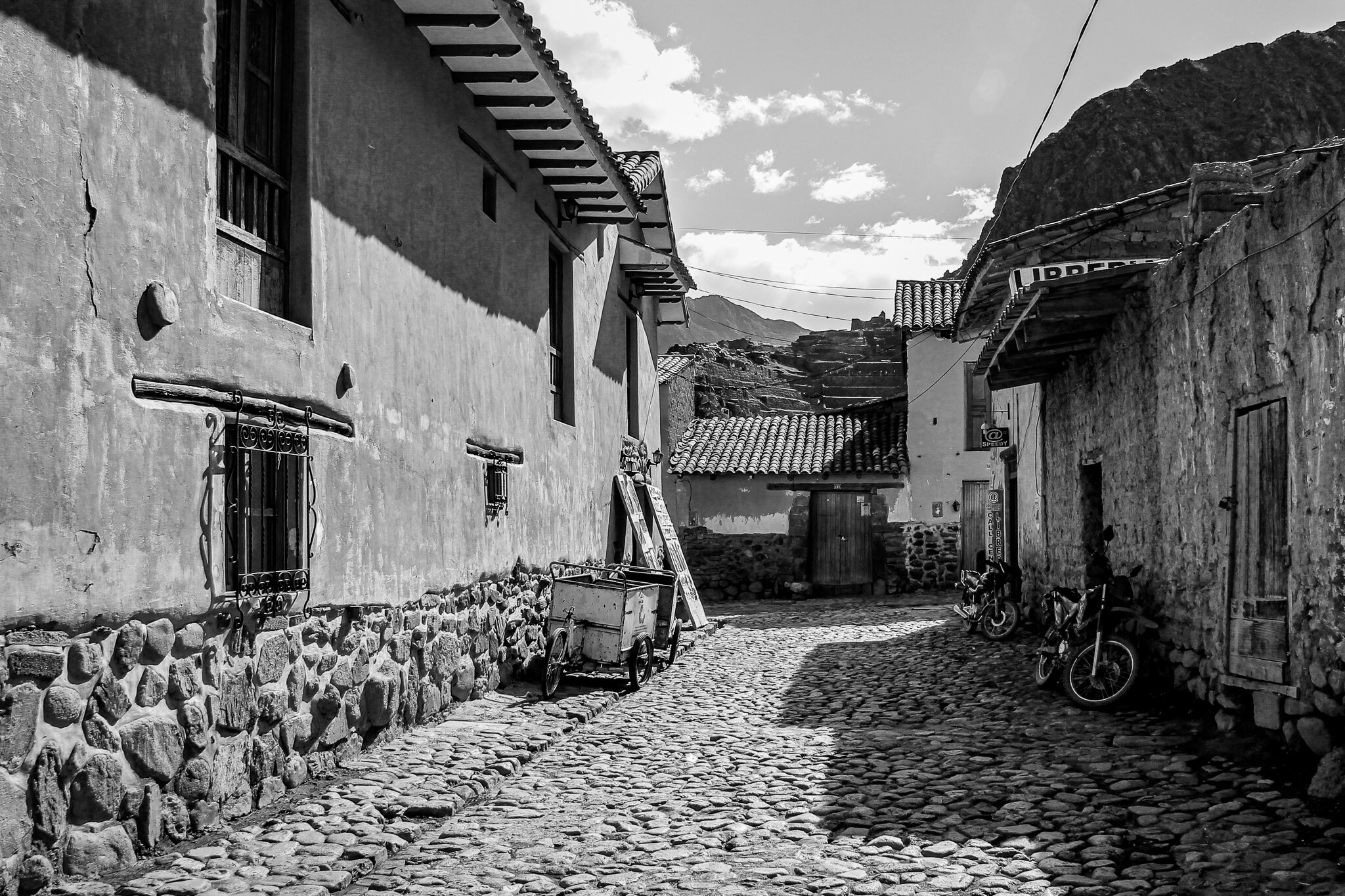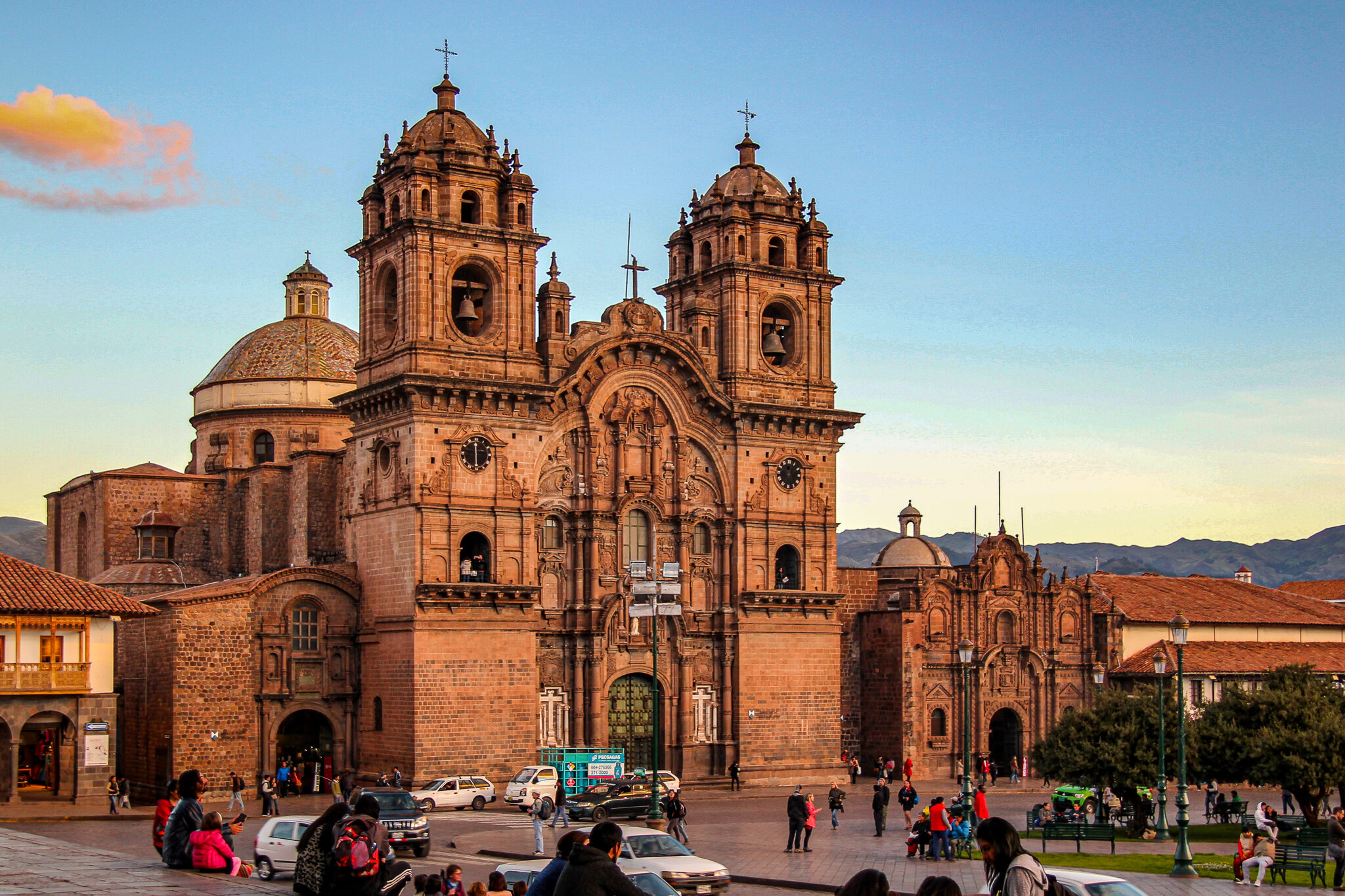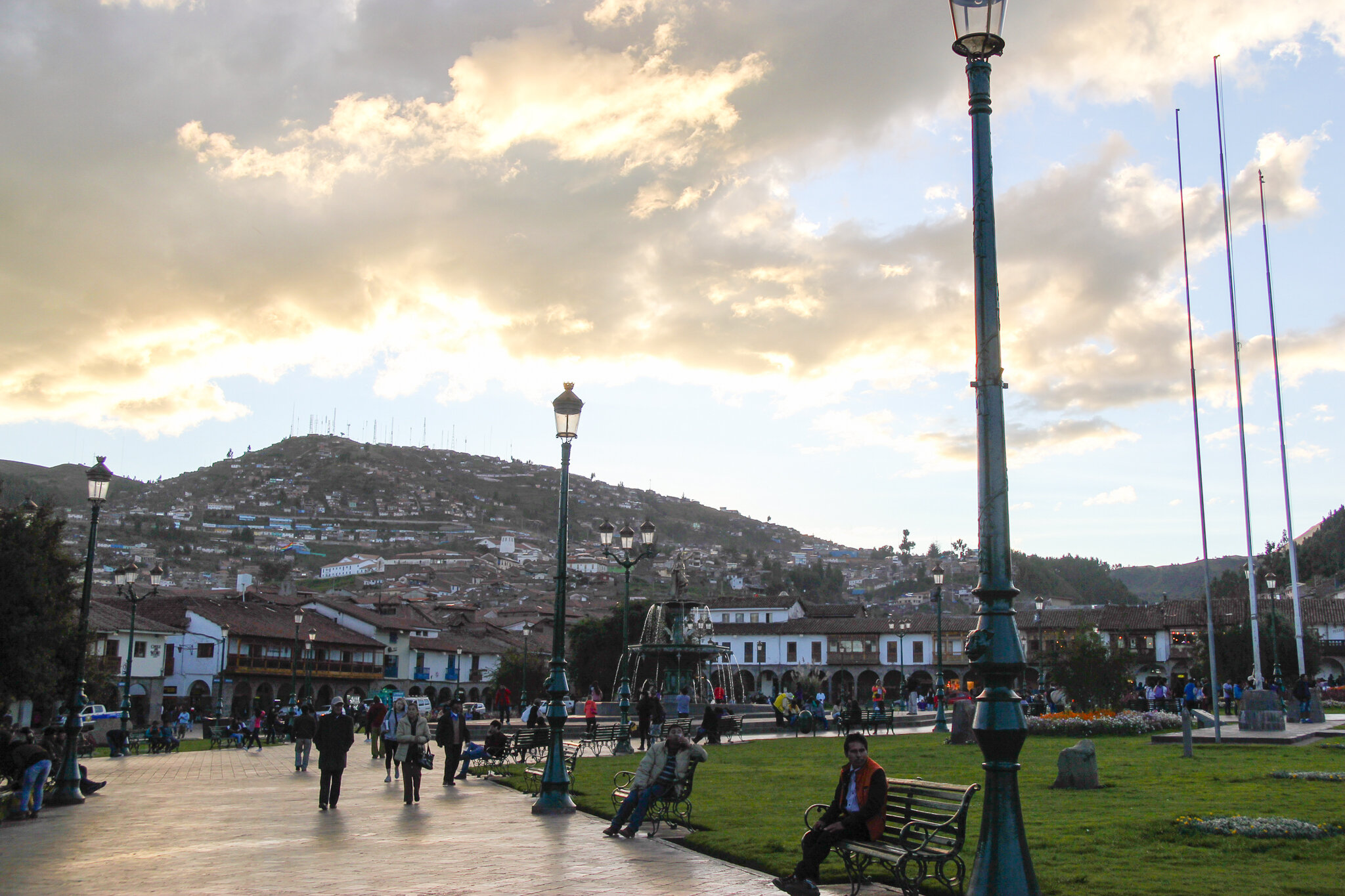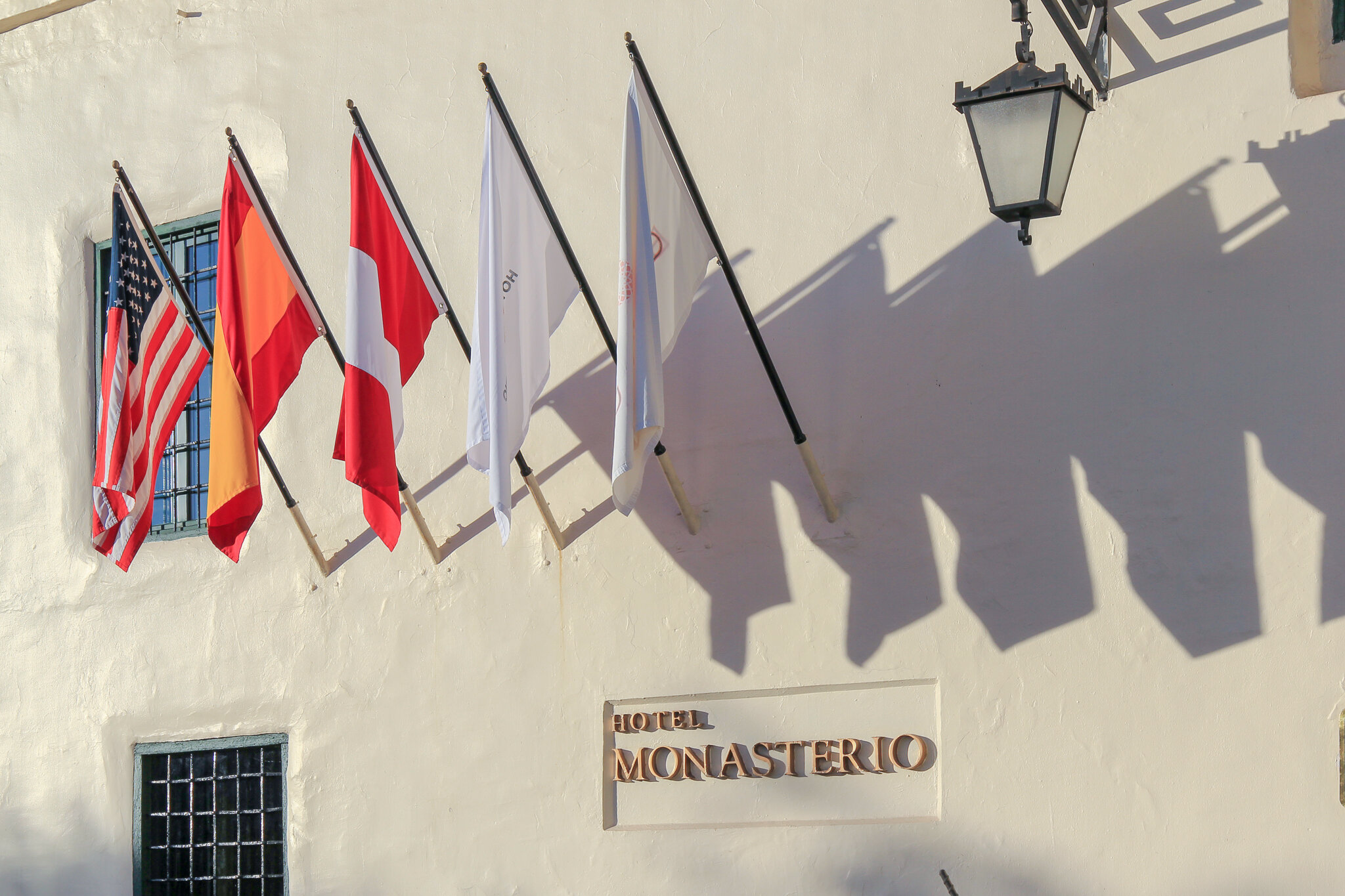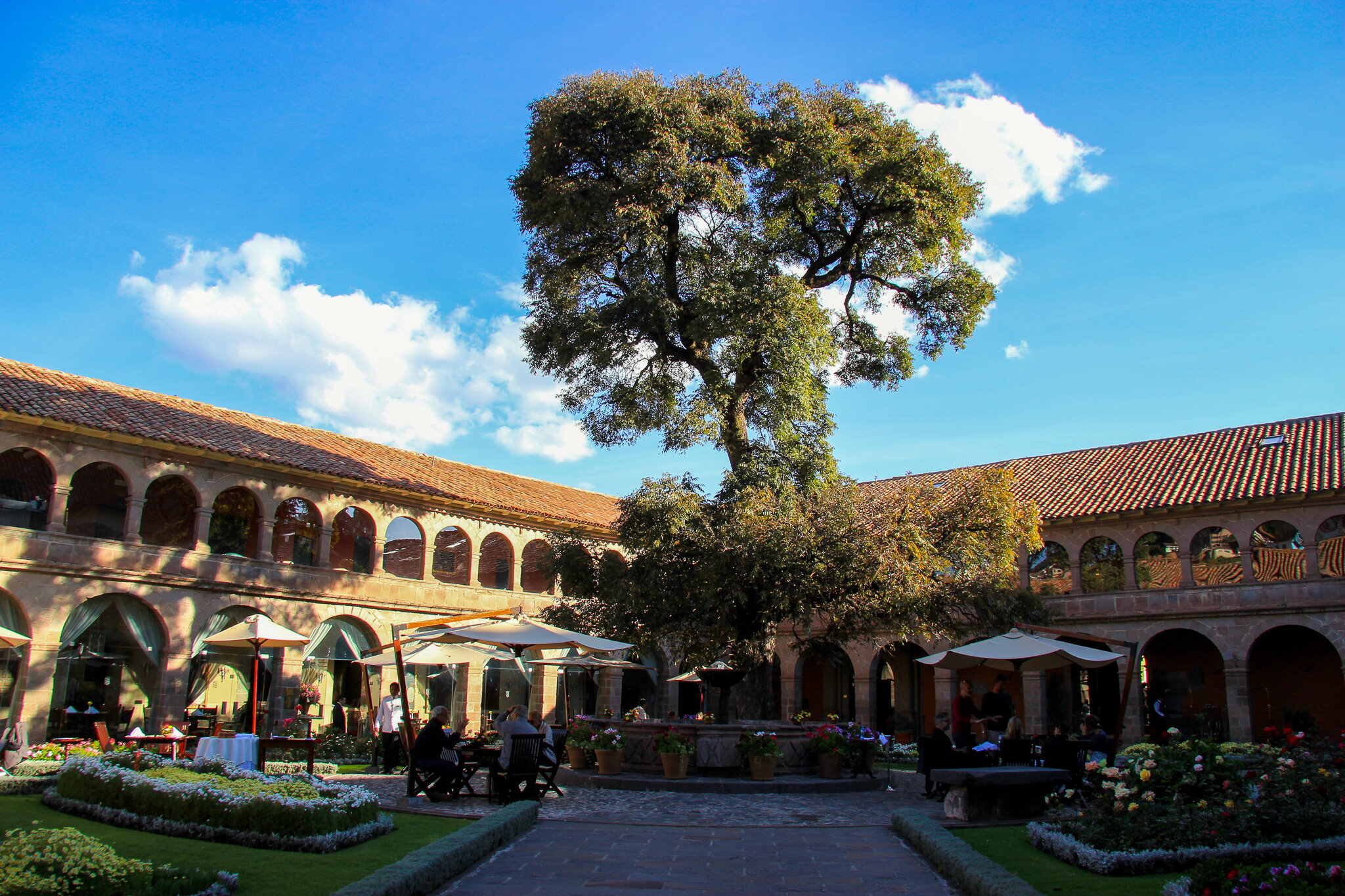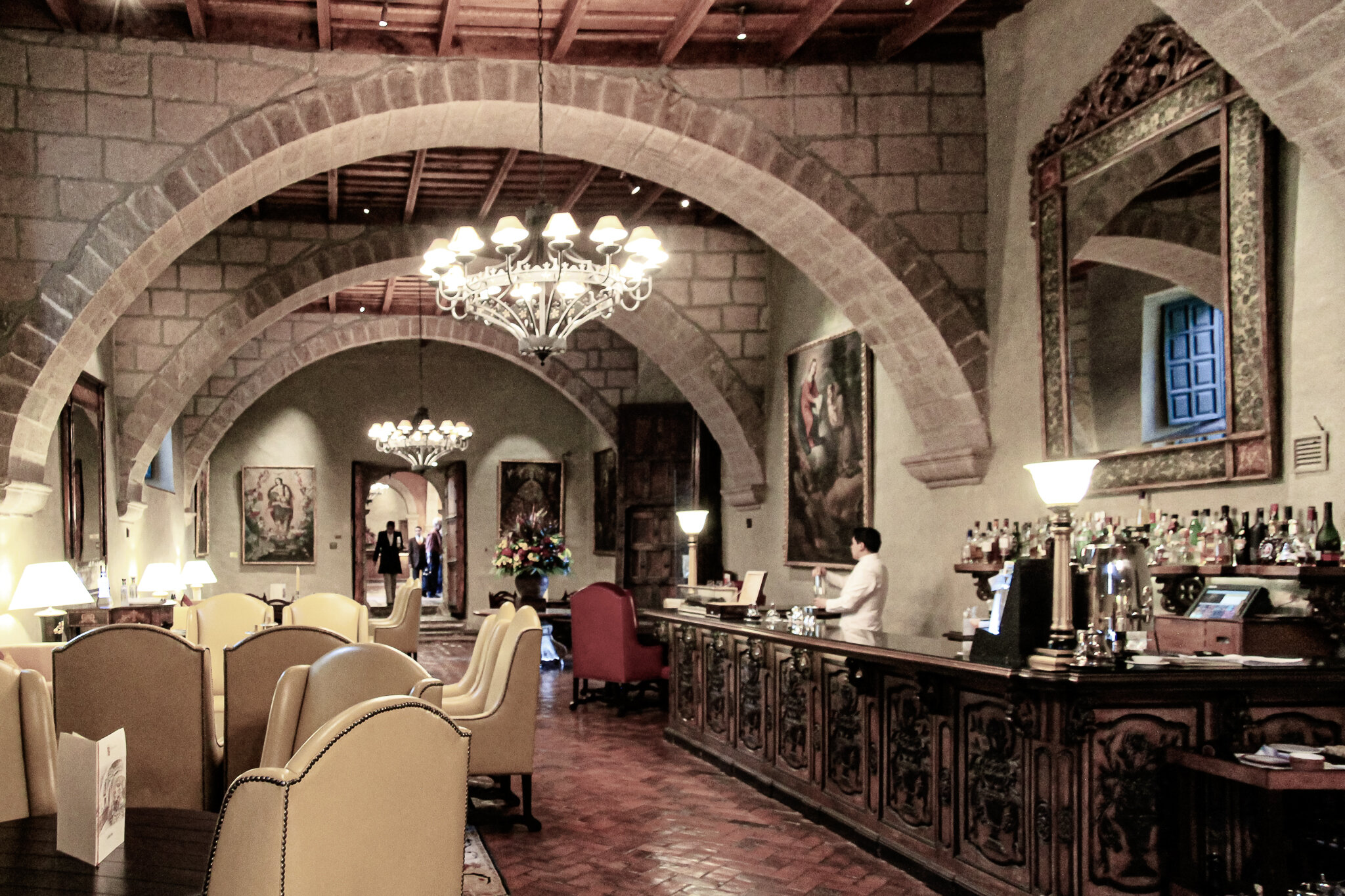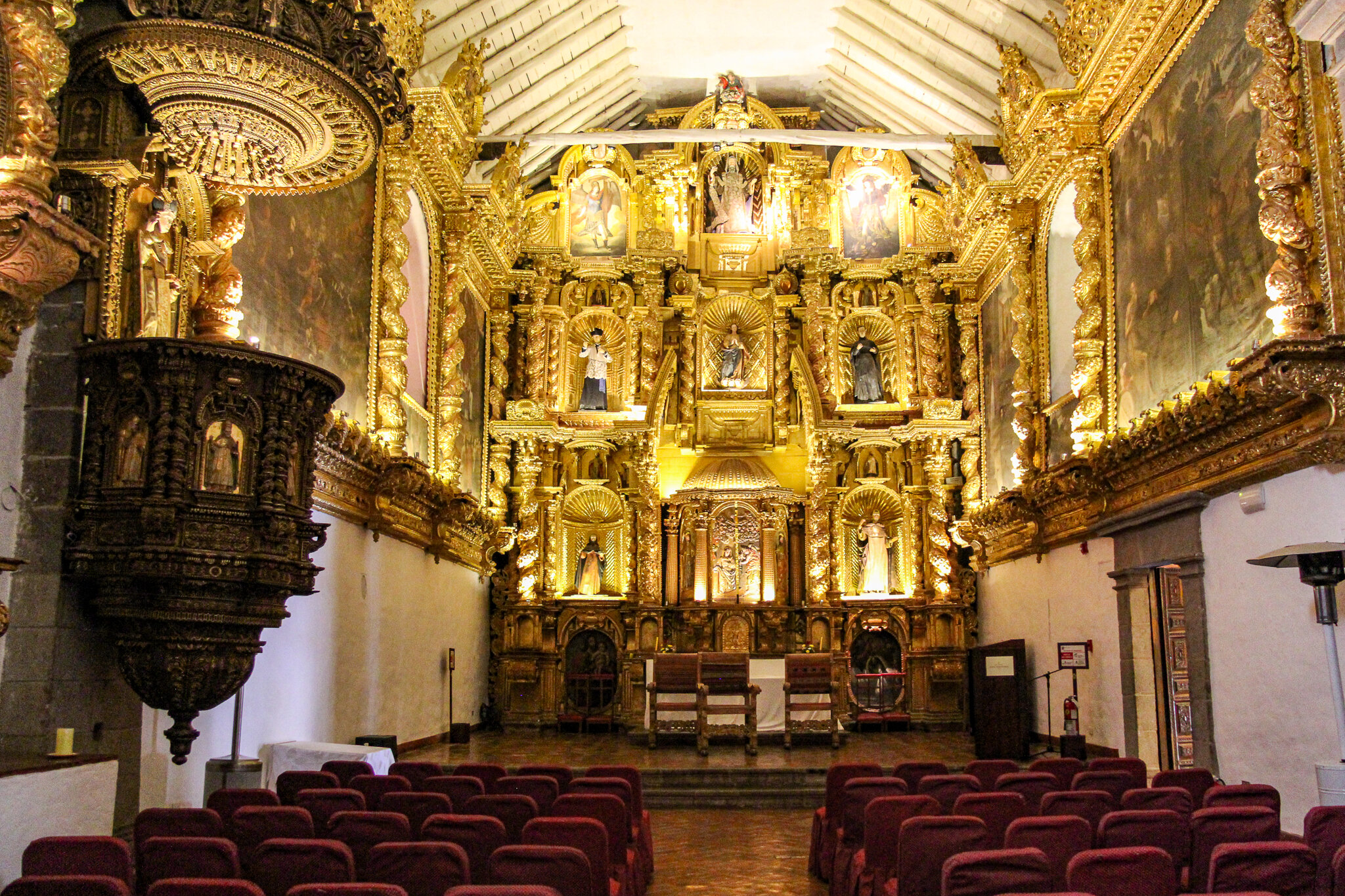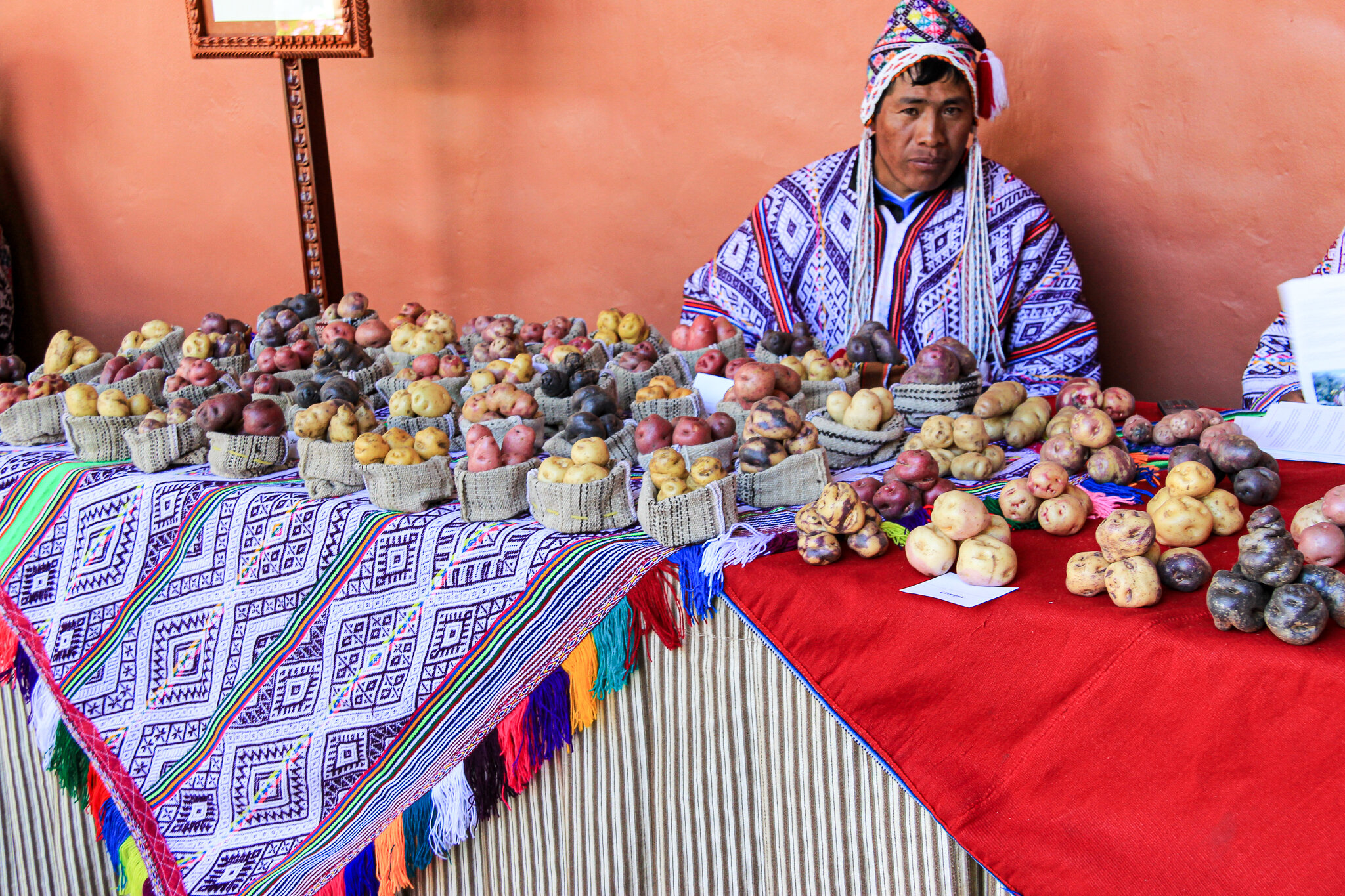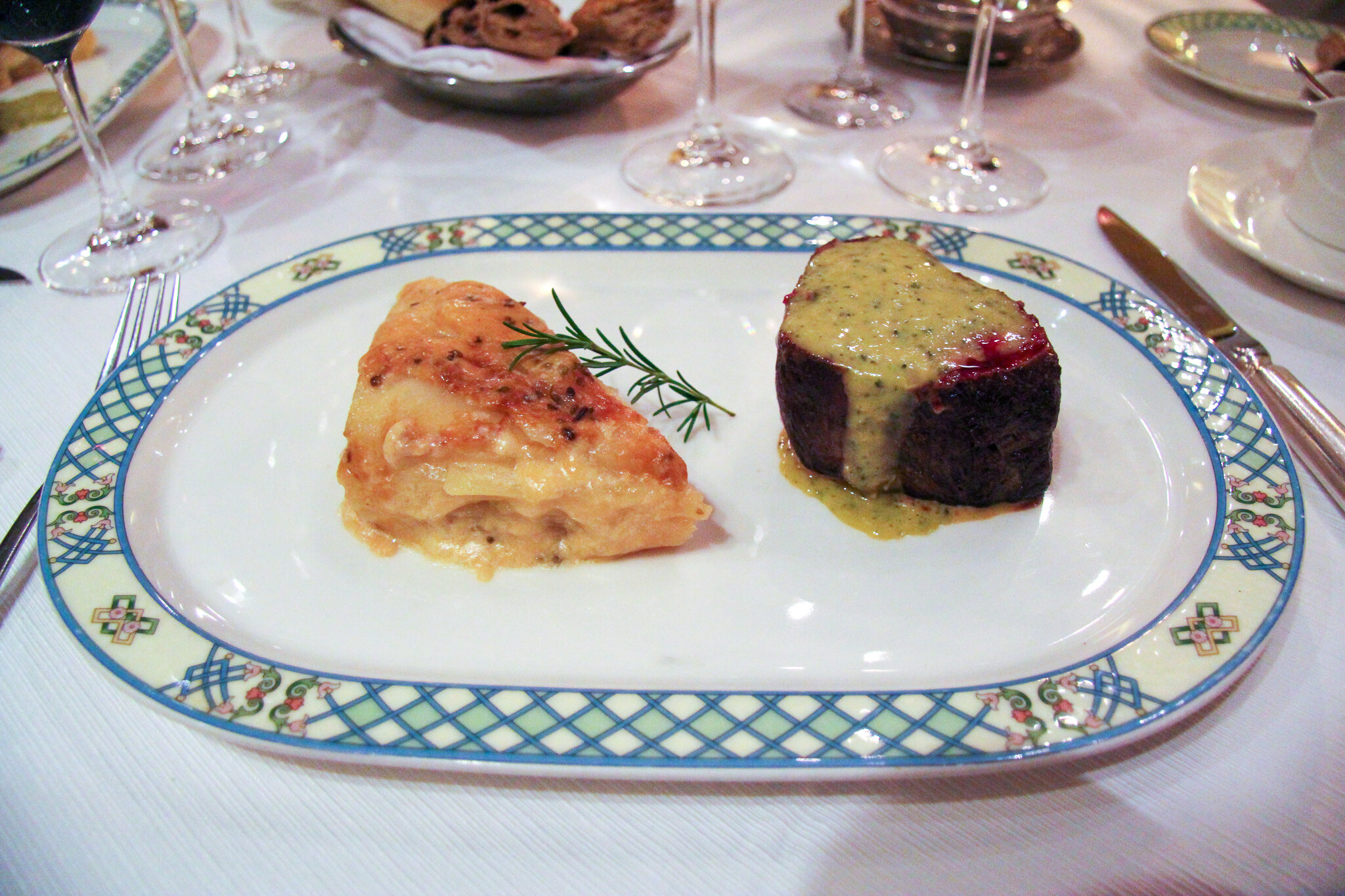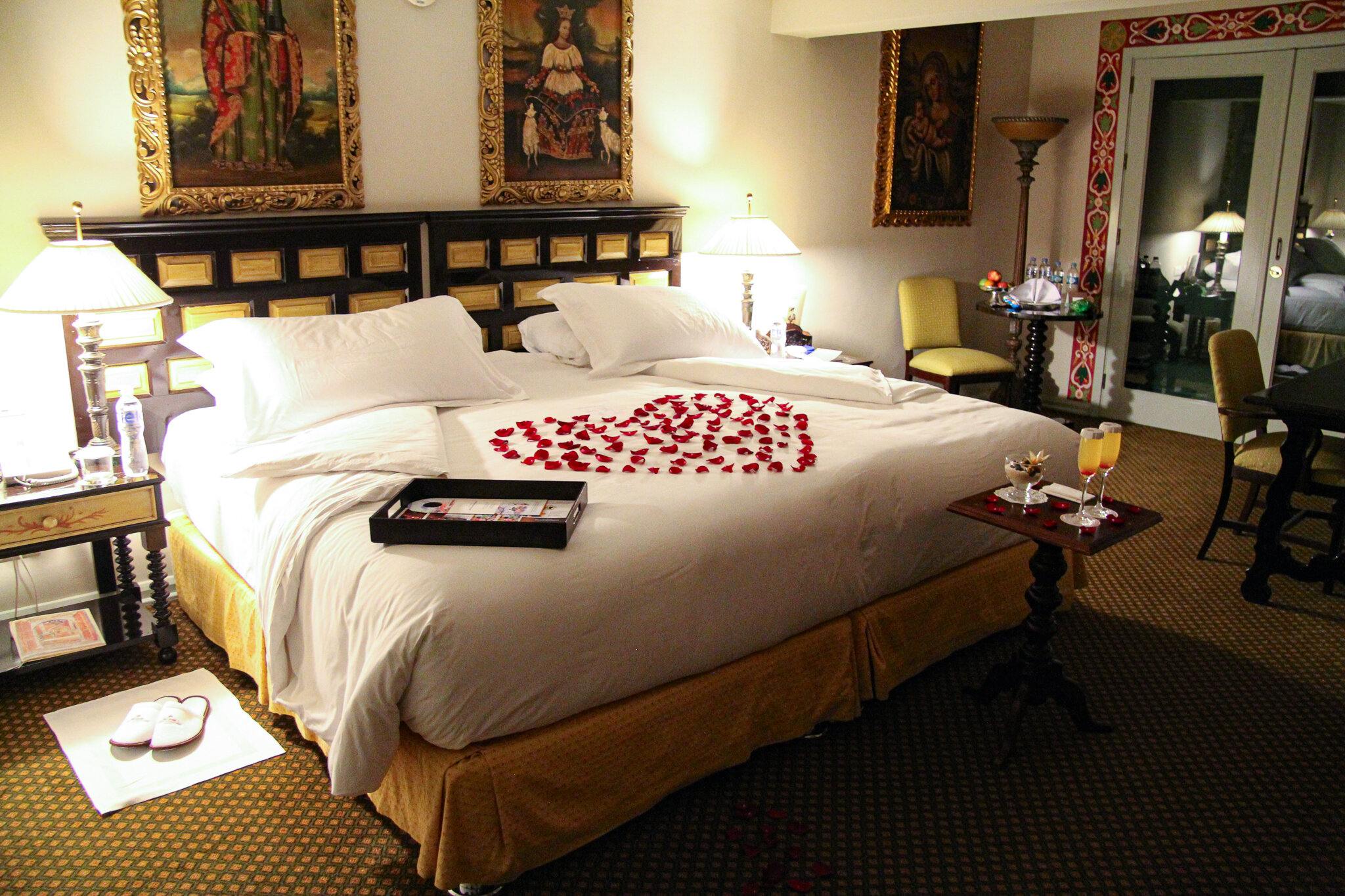Peru: Cusco
We participate in affiliate marketing programs, including Amazon’s. As a member of these programs, we may earn a small commission at no cost to you. Our full advertising disclosure is available here.
Ollantaytambo
After we departed from Aguas Calientes, our next stop was Ollantaytambo. Ollantaytambo is a quaint town that is sometimes referred to as the heart of the Sacred Valley. We stayed at the Apu Lodge, which is a very budget-friendly location. The Apu Lodge is categorized as a B&B, but we’d consider it to be more of a B&B-like hostel. Breakfast was included, and we had a view of the ruins in Ollantaytambo from our window. There are other options available on AirBNB, as well.
It was a bit of a hike to get back to our hotel, but it was like no place we’d ever seen. We watched a young boy wash his socks in the fresh mountain stream that flowed in front of each home. How cool is that?! A second lodging option in Ollantayambo is the El Albergue, which is located at the train tracks. It’s a more accessible option, and the food there is AMAZING. Their farm-to-table cuisine was so tasty and fresh that we ate both lunch AND dinner there. The owner of the Inn is a US expat, and she stopped by the table to greet us and check on our experience during lunch. We loved it so much, we’d definitely try to stay here the next time we’re in Ollantaytambo!
Several friends noted using Ollantaytambo as a “home base” while they explored Peru. The train station located in Ollantaytambo makes accessing Agues Calientes and Machu Picchu very easy. Since the lodging is also more affordable in Ollantaytambo than Aguas Calientes, this might be an option for you if your budget is tighter.
Shannon felt like she needed more time in Cusco due to her altitude sickness at the beginning of the trip, so we decided to shift our trip a bit and head back to Cusco a day earlier than we planned. We gave up touring the ruins at Ollantaytambo to do this, but gained all of the experiences that we were looking forward to when we first arrived in Cusco. So, we hopped into a colectivo (a local shared taxi) and journeyed back to Cusco with our new friends — two Australian backpackers and a Peruvian family with children. This is the most affordable way to travel, but note that you’ll stop to pick up and drop off people (sometimes literally on the side of the road), so it might take a bit longer. They’ll also try to make room, regardless of the number of seats, which was an experience.
Cusco
Once we made it to Cusco, we asked the driver to drop us off at the main square, the Plaza De Armas. We were shocked to see the main cathedral surrounded by shoulder-to-shoulder police officers in black tactical outfits and riot gear, complete with ballistic shields. We didn’t feel it was appropriate to take a photo, but it’s one of those images that is engrained in our memories. The officers were a preventative measure to protect the Cathedral (a national treasure) from potential riots that were happening elsewhere in Peru due to a conflict regarding copper mining. The entire situation remained peaceful while we were in Cusco and we did not experience any issues when we were later in Lima. The most notable thing about the whole situation was actually the absence of sound—the square was eerily quiet in the officers’ presence. An area we’d seen only days earlier, bursting with tourists, locals, and people trying to sell everything under the sun fell practically silent.
We walked quickly to our new hotel. We splurged on a luxury hotel, the Belmond Hotel Monasterio, for the final leg for our trip to Cusco. However, Shannon did score a great deal on Expedia. Because of Shannon’s earlier altitude sickness, we elected to have the hotel pump oxygen into our hotel room. We don’t know whether this helped, or whether Shannon had simply acclimated by that point in the journey, but she felt great for the rest of the trip!
The Hotel Monasterio is a former monastery and Peruvian national monument dating back to 1592. An earthquake damaged the building in 1650, and when it was restored and a beautiful Baroque chapel was added. We enjoyed indulging in the luxury the Belmond brand is known to offer, and we were definitely impressed. Peru is famous for having over 3,800 varieties of potatoes that are grown there, and one day the Hotel Monasterio even had a local potato display. We celebrated our belated second anniversary with dinner at El Tupay, a restaurant within the Hotel Monasterio, and enjoyed Pisco sours, wine, and chateaubriand. When we returned to our room, we were greeted by peach bellinis, candles, and rose petals. The Hotel Monasterio was happy to oblige when Michael requested this romantic arrangement.
The food in Cusco is wonderful, and there is a wide variety of cuisine available. Our favorites were Limo Cocina Nikkei and Cicciolina. We recommend making online reservations in advance, particularly for Cicciolina. Limo was a fun and casual place with great fresh options. The menu changes frequently, but a purple potato gnocchi was available when we were there, and it was both fun and delicious. If we had to choose only one restaurant to recommend in Cusco, it would absolutely be Cicciolina. It’s probably Shannon’s favorite restaurant in South America to date, and we’ve eaten at some pretty amazing places (see Cabaña Las Lilas in Buenos Aires). The salad was beautiful and colorful, and the fresh squid ink pasta was amazing. For more budget-friendly options, there are also plenty of local markets where you can pick up fresh juices, snacks, and food.
Cusco is rather famous for its parades. The Corpus Christi parade happened while we were in Cusco, and it was so much fun to watch the local children dance around and see their colorful outfits. If there’s a parade happening while you are there, definitely check it out!
View our other Peru adventures:
Part 2: Machu Picchu and Aguas Calientes
Part 3: Ollantaytambo and Cusco

